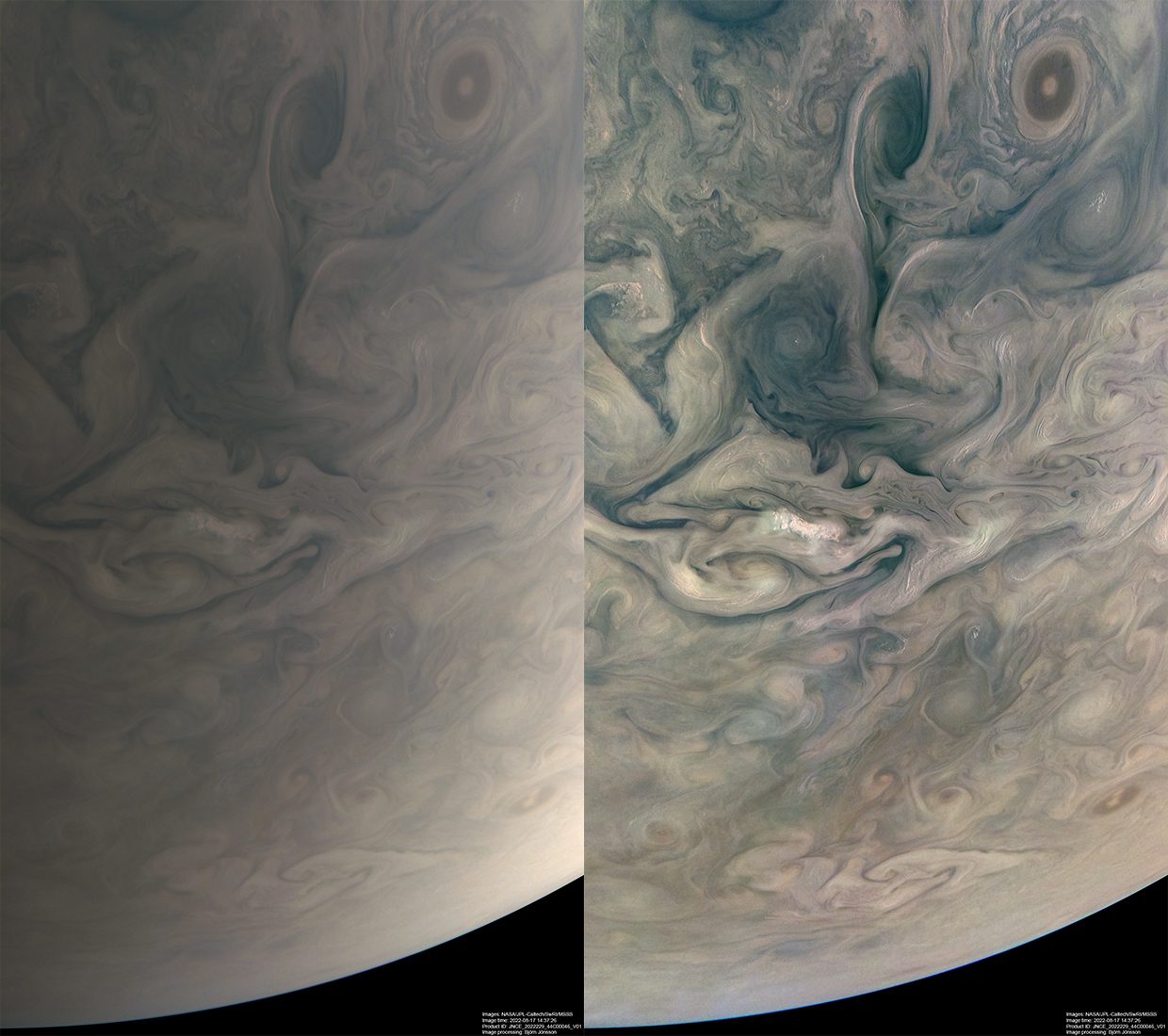This summer, a citizen scientist released a few images of Jupiter that look just like what our eyes would see if we were flying over the planet. And they are magnificent. Wider images show the creams, browns, whites and reds of the Jovian atmosphere, but in these images is a region that is less colorful, although the swirls of the atmosphere, from cream to bluish, are equally astounding.
“True color” processing is the approach used to turn astronomical images into something similar to what a naked human eye would see. Spacecrafts, robotic explorers, and telescopes have different filters that often capture more wavelengths that our eye would, even if their focus is visible light. So astronomers and citizen scientists have to make choices on how to best deliver a picture.

True color (left) and enhanced (right) view of Jupiter a few months ago. Image Credit : NASA / JPL-Caltech / SwRI / MSSS / Björn Jónsson © CC NC SA
The amount of light in different filters is turned into green, red, and blue, and sometimes yellow and purple. True color simply mimics how our eye would respond. Often true color and enhanced pictures are released together, like in the case of Pluto, the former to show what it would be like to us and the latter to show just how diverse its terrain is.
One of Juno’s goals is to understand the complex atmosphere of Jupiter and its clouds in particular. Many of the pictures processed by citizen scientists have enhanced the contrasts in the clouds, showing the turbulent nature of Jupiter.

True color (left) and enhanced (right) view of Jupiter a few months ago. Credit : NASA / JPL-Caltech / SwRI / MSSS / Björn Jónsson © CC NC SA
This set of images, prepared by Björn Jónsson, shows the difference between the “human eye” view and the enhanced “machine” view. There will certainly be people who prefer one to the other but seeing them side by side gives an idea of how they complement each other, and help us further understand the universe.
These images were taken by Juno during its perijove on July 5th. That was the 43rd close passage of the spacecraft around the planet.
[H/T: SciTechDaily]
Source Link: Gorgeous New Views Of Jupiter Reveal Its True Colors